⑩ Sectioning
Small blocks
Use a microtome to cut tissue blocks and mount a thin brain section on a slide.
Photographing the entire set
Sectioning set
Microtome, microtome knife for rough and main cutting, paraffin block, large and small brushes, dish, distilled water, acetic acid, glass slide, filter paper, roller, tissue floating, warm-water bath, and paraffin stretcher
|
 |
Photographing each set
- Fill the dish with distilled water in order to float the thinly sliced section.
- Add approximately 0.1% acetic acid to the distilled water.
|
 |
- Tissue floating warm-water bath set to 40 °C.
|
 |
- Paraffin stretcher set to 50 °C.
|
 |
- Microtome knife with new blades fitted in the blade holder.
- We use different knives for rough and main cutting.
- We use Feather Microtome Blades A35.
|
 |
Method
- Attach a new blade to the microtome knife for main cutting.
- After removing the used blade from the microtome knife for main cutting, attach it to the microtome knife for rough cutting.
|
 |
- Attach the microtome knife for rough cutting to the microtome and then set the paraffin block to the microtome.
|
 |
- Adjust the angle of the paraffin block so that the shadow of the new blade reflected in the paraffin block appears to be a certain thickness.
|
 |
- Trim until the cut surface appears.
- Completely expose the tissue surface, while reducing the tissue as little as possible.
- The sections can be thick during trimming.
- Completely expose the thin sectioning surface by fine-adjusting the front, rear, left, and right axes of the paraffin block mounting angle while trimming.
|
 |
- Always keep the areas surrounding the microtome clean by brushing away the paraffin shavings with a large brush and vacuuming them.
|
 |
- Attach the microtome knife for main cutting to the microtome.
- Attach this knife in the same position as the knife for rough cutting.
- After attaching the microtome knife, adjust the section thickness.
|
 |
- Blowing on the slice during sectioning moistens the tissue, which makes the sectioning smoother.
- It is better to use an automatic humidifier for sectioning.
|


 |
- Float the thinly sliced sections in distilled water.
|
 |
- Place the section on a glass slide using a small brush.
|

 |
- Float the section by gently submerging the glass slide in 40 °C distilled water within a warm-water bath paraffin stretcher.
|
 |
- Once the section has been stretched, place it on a glass slide using a small brush.
|
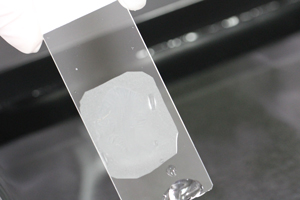 |
- Place the glass slide on two-ply filter paper.
|
 |
- Place wetted two-ply filter paper on the glass slide and hold it with your hand.
|
 |
- Roll the roller 2 − 3 times.
|
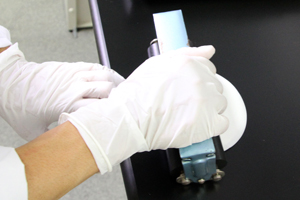 |
- Dry the glass slide on the paraffin stretcher.
- Leave the section until it has completely dried.
|
 |
- After completing the sectioning, remove the paraffin block from the microtome.
- Cover the cut surface of the paraffin block with melted paraffin.
|
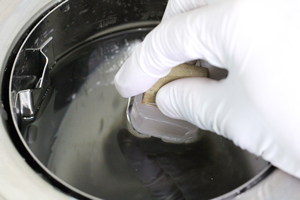
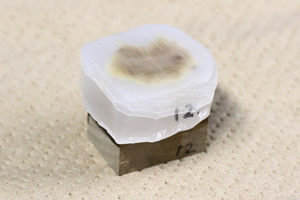 |
Issues to consider during sectioning
Bubbles under the section
| Bubbles can be trapped under the section when the section is floating in distilled water. If this happens, first, place the section on the glass slide up to where the bubbles are present. |
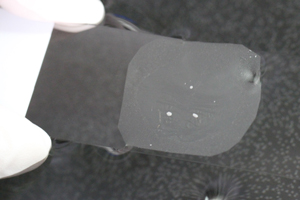 |
| Then, remove the bubbles by lifting the section from the water surface, removing the part with bubbles from the water, and exposing it to the air. |
 |
| Gently float the section on the water surface. If the section is roughly returned to the water, then bubbles may be trapped under the section again. Please use caution. |
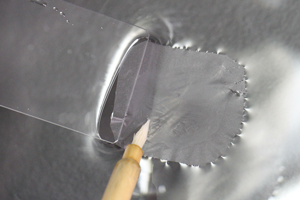 |
Water droplets on the section
| Water droplets can form on the section. If these droplets are not removed, then the affected area will swell. Therefore, if water droplets form here, then quickly wipe them off with a Kimwipe or other suitable material. |
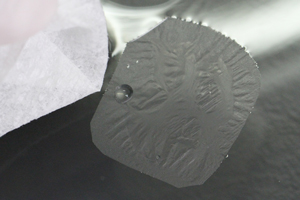 |






























